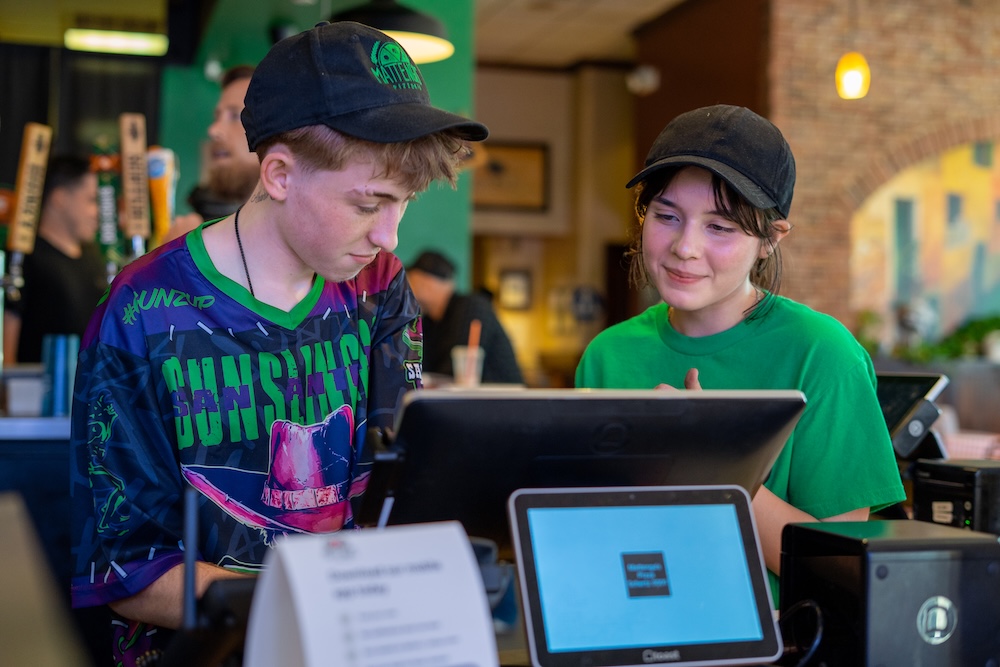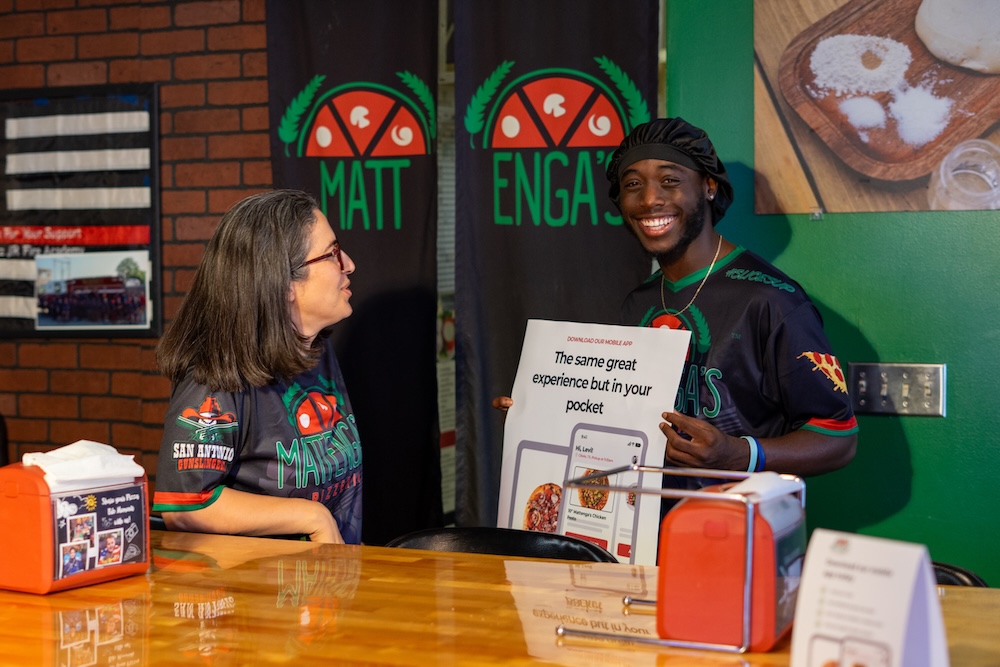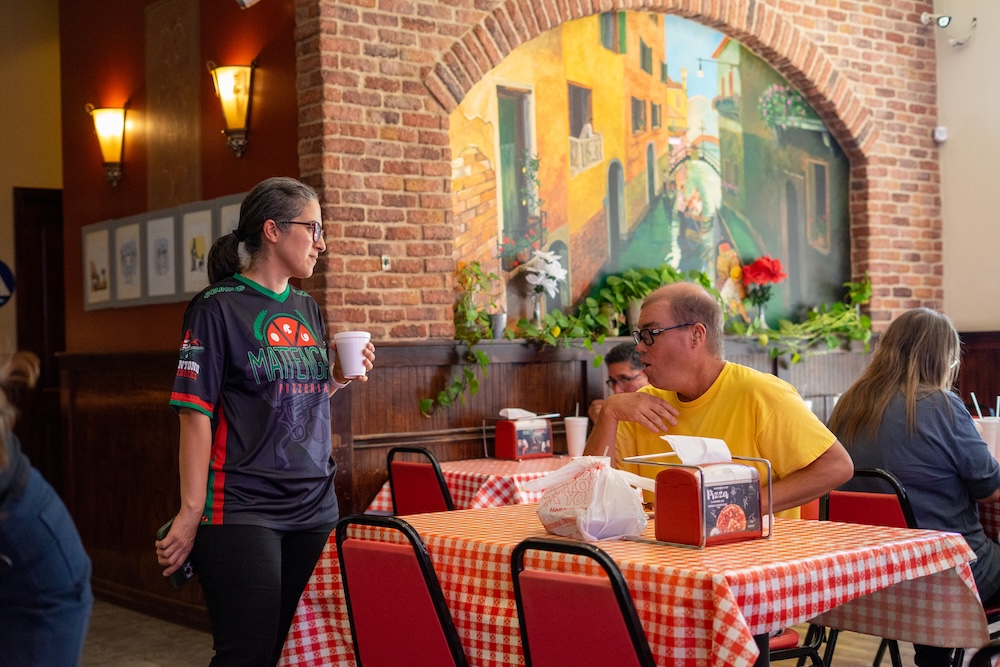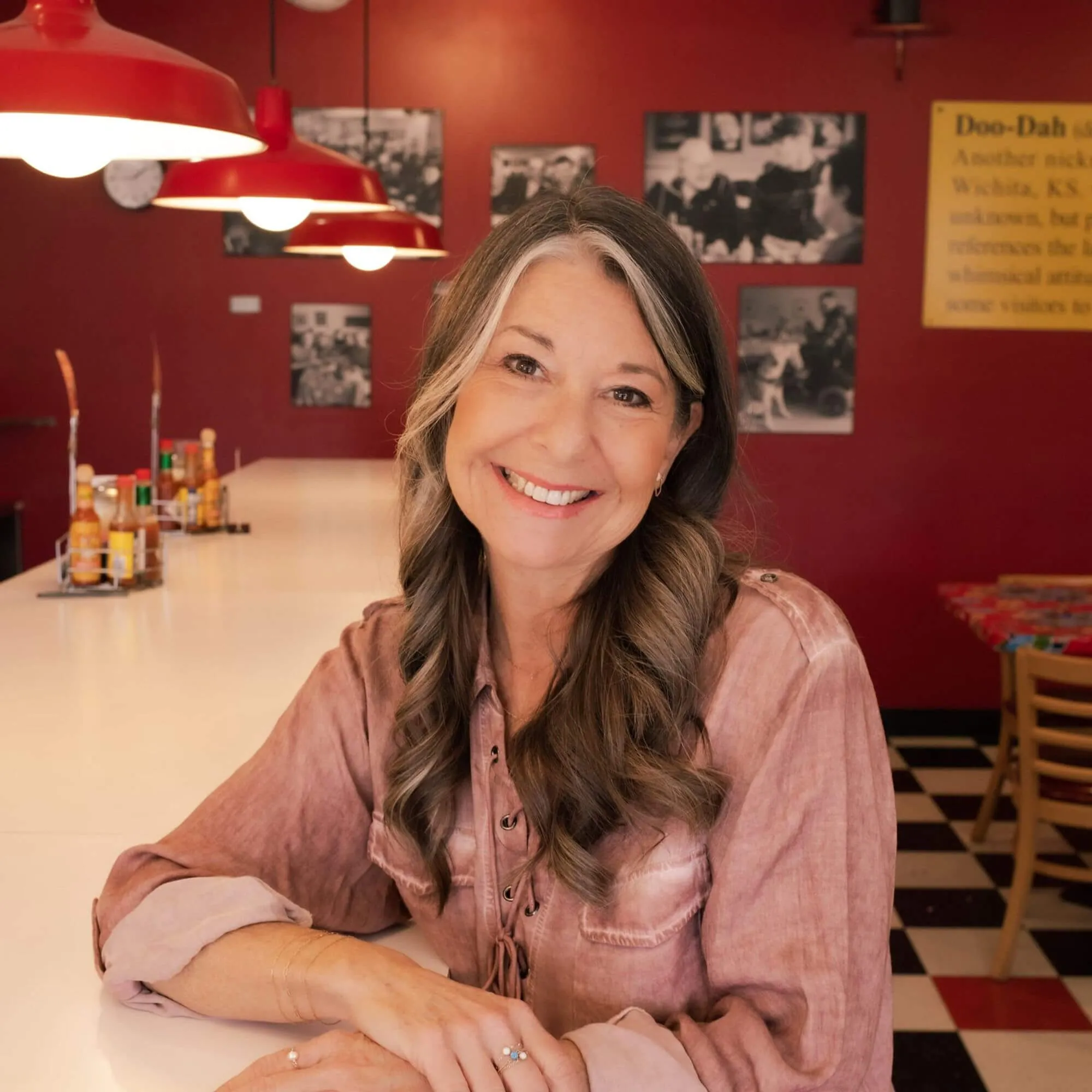The Direct Catering Playbook: How I Built a 6-Figure Profit Center (Without Paying Huge Commissions)
Here’s the catering playbook I use to build a six-figure profit engine, grow corporate accounts, and drive direct orders.

Key takeaways
- Catering should be your highest-margin growth engine. Treat it as core business, not a side hustle.
- Obscurity is the #1 barrier: make your catering impossible to miss in-store, on your website/GBP, and in every order.
- Own the channel to protect profit: shift marketplace orders to direct ordering and win repeat business with per-person bundles, premium packaging, and on-time delivery.
Catering should be the most profitable segment of your restaurant. The tickets are significantly larger, the revenue is predictable, and the margins on bulk production are healthier than à la carte service.
But I see the same error over and over: restaurants treat catering like a passive side hustle, letting marketplaces take large commissions off every order.
Catering is not just extra revenue; it's an engine for growth. But to capture that growth, you have to own the channel and execute relentlessly.
If you're looking to grow your catering, here's what's worked for us.
The #1 Barrier to Catering Growth: Obscurity
The fundamental problem that kills most catering programs: Your customers don't know you cater.
You can create the perfect catering menu and still fail because not enough customers know it exists. Restaurants do this all the time, then think catering "didn't work" for them.
A regular customer who orders from you twice a month for dinner may have no idea you can handle their office's 40-person lunch meeting. That office administrator who orders weekly will still default to big chains for catering if they don't know you offer it.
If people don't know you cater, nothing else matters. Your catering offerings must be impossible to miss across every customer touchpoint.
Here's why solving that visibility problem is worth the effort.
Why Catering Is So Valuable for Your Restaurant

Before we dive into the tactics, let me explain why catering has been such a big deal for our business. It's not just about bigger tickets—though that's part of it.
Here are the four reasons catering has become so important to us:
1. Catering gives you massive exposure to new customers
Catering tickets are typically 5x to 10x larger than regular orders ($200+ vs. $20). But the real value is exposure.
This Monday we delivered 57 pizzas; a $2,000 order. That's 150 to 200 people who tried our food and asked, "Oh, where is this from?"
It compounds. Someone from another department tries your food, then orders for their event. Some become regulars. You get the initial order plus the ripple effects.
2. Bulk orders have much better margins
One $500 order takes less labor than 50 individual $10 orders. You're making food in bulk. One transaction, one delivery, one phone call instead of 50.
3. Corporate clients don't haggle on price
Corporate clients don't nickel and dime like regular customers. It's often the company's money, not their own.
We do try to work with people's budgets. But these customers aren't expecting deep discounts.
They're used to Panera or Chipotle at $12 to $15 per person. Companies can handle those prices from local restaurants.
4. Catering fills your slowest days
Corporate catering demand peaks Monday through Wednesday, filling your slowest dine-in days.
Pre-booked orders let you manage inventory and staffing better. You know what's coming instead of guessing.
My 9 Go-To Tactics to Grow Your Direct Catering Business

Now let's get into the specific tactics you can use to promote your catering, bring in more orders, and turn one-time customers into repeat buyers.
1. Build a direct, commission-free ordering experience
Using marketplaces is expensive. Shifting to direct ordering has made a big difference for us.
Let's do the math. Moving $10,000 a month in catering from a marketplace to your website adds $2,000 to $3,000 back to your bottom line. That's up to $36,000 a year saved on the same sales volume.
The margins alone justify the shift a direct online catering system. But there's another big reason: owning your customer data. If you don't have a customer's email and phone number, they aren't your customer. Marketplaces hoard this data to remarket other restaurants to your clients.
Direct ordering captures the data you need to drive repeat business.
The catch: You have to get a few important details right. We'll cover those in the next sections.
2. Engineer a menu that travels and sells
Catering menus aren't just larger versions of your regular menu. They need to work for bulk production, travel time, presentation, and how corporate buyers think.
Gear your menu around a “per-person” budget
Always ask for the per-person budget, not the total budget.
When you ask for the total budget, people say, "$100 to feed 150 people." When you ask for per-person budget, they say, "Oh, $6 to $10 per person."
See the difference? People know McDonald's costs $10 to $12 per person. Asking per-person resets what clients think is reasonable.
Frame your menu this way too. Structure offerings using a "Good/Better/Best" tiered system. Display the price per person alongside the total price and servings.
Example: We have a half tray of pasta for $45 that feeds 12 people. That's $3.75 per person. Package it with Caesar salad and breadsticks for $8 per person total. That's a no-brainer.
Don’t be shy about sharing per-person recommendations
Here's something that might surprise you: I actively try to get customers to reduce variety.
Too much variety increases food waste for the client and hurts kitchen efficiency.
When customers ask for fettuccine Alfredo, spaghetti meatball, lasagna, and two salads, I respond: "We'd be happy to serve what you'd like. However, I strongly recommend we reduce the variety. That will cost less per person and you'll have far fewer items thrown out."
Most customers respond: "Oh, that's great. Good to know." They recognize you as the expert.
Don't shy away from persuading the customer. You're giving a recommendation to help their budget go further.
Nail the presentation and logistics
In catering, the packaging is the plating. How the food looks when opened is your brand.
Here's how I make the little differences count:
1. Invest in quality
Use high-quality, sturdy black-bottom containers with clear lids or premium aluminum trays. The investment signals quality and justifies the price point.
2. Be prepared with supplies
Always maintain a dedicated inventory of catering supplies: paper plates, disposable utensils, napkins, half trays, and large trays.
Be ready when the opportunity comes. Don't make customers jump through hoops or tell them they should have given you notice.
3. Adapt your menu for travel
Engineer the menu for durability. At the restaurant, we serve salad with a 2-ounce cup of dressing on the side. For catering, that's not efficient. If it's 200 people, giving 200 cups is too much.
We make vinaigrette in-house, but for catering we buy branded dressing packets. Salad gets soggy when it sits. Account for that.

4. Offer (the right) catering-specific items
Consider items that only make sense in bulk. We have brownies that aren't on our regular menu. We keep them in the freezer because we needed a dessert option.
We can't keep brownies fresh for individual in-store sales. But we need trays in stock to service catering orders. If we can't fulfill what they want, we persuade them to get another dessert we have.
5. Don’t treat dietary restrictions as an afterthought
There's usually somebody in the office with a dietary concern. For catering, you must clearly label allergens. Account for the fact that some people are gluten-free or dairy intolerant.
We win orders because we have those options: gluten-free pizza, cauliflower crust, salad with chicken. Make sure you have variety for different dietary needs. Offer both family-style trays and individual options like lunch boxes.
3. Combat obscurity at every customer touchpoint
Your catering capability needs to be obvious everywhere your customers are. This takes effort across multiple channels.
In-store visibility – the foundation for orders
If customers don't see catering promoted in your restaurant, they assume you don't offer it. Full stop.
Use high-quality posters featuring your best catering setup photos at the register. Include a clear headline ("We Cater! Offices • Events • Parties") and a QR code linking directly to your catering ordering page.
Beyond posters, here are tactics for raising awareness in your physical location:
Physical catering menus: Keep printed catering menus at the POS and on tables. Customers browsing while waiting for takeout can grab one. Staff answering catering calls can reference it immediately, even if they aren't fully trained.
Cards or flyers in every single order: Every takeout bag should include a catering flyer or menu. Your regular customers are your best source of catering leads.
Train staff to mention it: When a customer is ordering for a group, staff should mention: "Just so you know, we also handle catering for offices and events."

Digital visibility – where the search begins
Most catering research starts online. Your website and digital presence must immediately communicate that you offer catering.
Put it on your homepage: A catering CTA ("Order Catering Now" or "Cater Your Next Event") must be above the fold. Ideally in your sticky navigation.
Update your Google Business Profile: Your GBP is often the first thing potential customers see. Make sure they know you offer catering:
- Category: Add "Catering" or "Caterer" as a secondary service category
- Direct linking: Link the "Order" button directly to your catering ordering page, not your homepage
- Visual proof: Frequently post photos of catering setups. Use Google Posts to announce seasonal packages
Publish a landing page for catering: Build dedicated pages optimized for the exact phrases administrators search. (Note: Owner does this for you automatically.)
{{cta-1}}
4. Get proactive to drive new corporate customers
Restaurant SEO helps you capture people already searching for catering. Proactive outreach lets you reach businesses that aren't actively looking yet; they might not even realize they need you.
This is about targeted, direct contact. You're reaching corporate clients where they are, not waiting for them to find you.
The "Sponsored Lunch" strategy
This strategy generates goodwill, social proof, and huge value over time.
1. Targeting
Identify local businesses with significant office staff: banks and credit unions, medical and dental practices, car dealerships, energy companies, insurance agencies, distribution centers (FedEx, UPS), and so on.
Drive around your delivery area and make a list. Use Google Maps to find businesses within 3 to 5 miles. You want companies with at least 25 employees where people gather for lunch.
2. The pitch (via cold email)
I have a team member in charge of cold calling and cold emailing. Here's what we say:
"We randomly select a few businesses every week to sponsor their lunch. We give out three pizzas for free that serve about 12 people. We would love an opportunity to serve you. Our only ask is that you come pick it up and share a picture of the team enjoying the food."
Keep it simple. Don't oversell. You're a local restaurant down the road that wants an opportunity to serve them. Make it feel like they're being selected, not sold to.
3. The economics of the offer
The offer is generous (three pizzas, about $40 to $60 food cost), but requiring pickup saves delivery labor. This keeps the cost manageable while giving them real value.
This isn't a cost; it's an investment in customer acquisition. You wouldn't think twice about spending $50 on Facebook ads that might not work. This gets your food directly in front of multiple decision-makers and employees.
4. The immediate upsell
Usually, people say, "We actually have 25 people in the office. How many more pizzas is that? We'll pay for those and come pick it up."
The free sampler frequently converts into an immediate paid upsell that covers or exceeds the initial investment. Even when it doesn't, you've accomplished the critical goal: exposure to the entire office.
5. The result
For the cost of three pizzas:
- Authentic content to post on social media
- Exposure to the entire office
- A relationship with the decision-maker
- High probability of future orders
That's how you have to think with catering: make small investments today for much larger, long-term payoff.
Manager field visits (the "admin drop")
During slow hours (2 PM to 4 PM), have a manager or trusted staff member visit nearby offices.
Identify the decision-maker (Office Admins, Executive Assistants, HR coordinators) and bring:
- A physical catering menu or one-pager with a QR code
- High-quality samples (free taste beats a coupon)
Make it brief, professional, and friendly. Introduce yourself as being from the restaurant down the street and hand them the materials.
Sow seeds for seasonal demand
Especially during Q4, plant the idea of appreciation meals during every interaction. When we drop off food for standard orders, we say:
"Hey, if you want to show appreciation to your team with food, we're happy to serve you."
This plants the idea in their head. They might realize they forgot about team-based or end-of-year events and decide to order. It costs nothing and creates seasonal urgency.
Loyalty focused on the main buyer
Reward the person ordering the food, not just the company.
Tell the administrator: "Order via your personal account to earn points toward your own personal food." This personal incentive creates powerful motivation to choose your restaurant repeatedly, locking in the account.
They have to expense the order in either case. This way, they’re getting loyalty program points that they personally benefit from.

5. Understand catering seasonality: When to push hardest
Catering demand follows predictable seasonal patterns. Prepare for these peaks and adjust your marketing accordingly.
November & December (peak season)
This is your highest-revenue period for corporate catering. End-of-year team appreciation meals are culturally expected; most companies budget for them.
Focus all your corporate outreach and email campaigns during Q4.
Thanksgiving week (retail surge)
While regular restaurant sales may be slow during Thanksgiving, retailers experience a surge.
We have a FedEx distribution center, Walmart, and other retailers close to us. They order big for their teams around Thanksgiving week because they're overworking people during the holiday rush.
May (graduation season)
Expect high-volume family orders for graduation parties. These are typically weekend orders for trays and large pizza quantities.
Plan your inventory, staffing, and marketing campaigns around these patterns. In Q4, focus entirely on corporate outreach and sowing seeds for appreciation lunches.

6. Build your playbook to convert marketplace orders
If you use marketplaces for discovery, you need a plan to move customers to your commission-free channel.
Don't hope they find your direct channel. Incentivize the switch:
Add a direct order flyer
Your best conversion tool. In every catering order (especially via third parties), include a high-quality marketing flyer, card, or sticker.
- Placement: Attach a sticker to the top of the main food boxes where the organizer can't miss it. Or place a card or flyer with the receipt.
- Message: Keep it direct: "Love our food? Save money by ordering direct next time." Include your website link or QR code.
- Offer: Provide a strong incentive for their first direct order. A percentage discount (10% to 15%) or a free item (gallon of iced tea, dessert tray) often performs better than a flat dollar amount. Use a unique promo code or QR code to track conversion.
Make changes to your prices
If marketplace terms allow, make your prices slightly higher on those platforms to cover the commission. This positions your direct channel as the most cost-effective option.
Follow up with customers directly
Identify the company and administrator from the marketplace order information. Follow up to thank them, ensure the order was perfect, and introduce your direct channel.
(Note: Check marketplace terms of service regarding customer communication.)
7. Drive repeat orders through flawless execution
The #1 reason corporate clients return is reliability. Catering requires higher operational discipline than standard restaurant service. Mistakes here are costly and often permanent.
Punctuality is everything. Obsess over it.
A late delivery embarrasses the organizer in front of their colleagues. This loss of trust is permanent, even with a refund. The order must be on time.
The "never say no" policy (mastering last-minute orders)
Large, last-minute requests are common in catering. We try to never say no. Here's how we keep these orders without lowering standards or putting staff in impossible positions:
The "Yes, and" pivot
We may say no to what they're asking, but we'll say, "We can't do that, but we can do this."
Example: They want lasagna. I can't produce lasagna in 90 minutes. But we can pump out pizzas with breadsticks and salad. Always look for what you can do.
Negotiate the time vs. the order
Always try negotiating the time. If it's going to hit our lunch rush, we ask, "Is it okay if delivery is at 11:00?" From 10:00 to 11:00 the kitchen isn't busy, so we can pump the order out.
Delivering earlier (when the kitchen is less busy) often works for the customer.
Monitor catering orders closely
Your team needs to know when a 25-pizza order is inbound. When the team arrives, they check scheduled orders.
If a large order can't make the timeline, call the customer and offer "split delivery": "I can have 10 pizzas ready at 11:00. Then we'll send another 20 in the next 30 minutes. Will that work?" Most people say yes.
The professional touch and operational rigor
The experience reflects on the organizer personally. Get these parts right:
- Driver demeanor: Make sure drivers look presentable and act professional. With your own team, remember they're not just dropping things off. Catering orders have bigger tips; the driver should offload everything and set things up.
- Recipes and admin support: Be prepared to quickly provide digital copies of receipts and invoices. Customers often need to send these to their finance department.
- The 24-hour call: For high-value orders (over $300), a brief phone call from the manager the next day makes a huge difference. Ensure everything went smoothly, build the relationship, and get feedback if mistakes were made.

8. Use your customer list to drive reorders
If you focus on direct catering orders, the data you capture will help you stay top-of-mind and drive reorders during key periods.
You own this channel. Use it strategically:
Try the Monday morning email
Corporate catering is heavily weighted toward Monday through Wednesday.
Send a Monday morning email: "Need a last-minute lunch meeting catered this week? Order direct by 10 AM." You'll catch people who put off placing the order they need later in the week.
Don’t forget seasonal prompts
Use catering seasonality to your advantage. In Q4 (peak season), send emails reminding businesses to book their holiday and end-of-year appreciation lunches.
Many companies will realize they forgot and book immediately.
Make it clear you’re capable
When you complete a large event (a 250-person lunch), send an email highlighting it with photos.
This combats the perception that a local restaurant can't manage large volumes. It also creates the impression that "everybody's ordering" from your restaurant.
Use SMS drops—selectively
Use SMS sparingly for high-urgency, limited-time offers ("Free delivery on catering over $200 this Wednesday") to drive immediate demand on slow days.
9. Create a 30/60/90 day growth plan for catering
Strategy is great. Execution is everything.
Structure your catering efforts with clear timelines and metrics so you make real progress.
Days 1–30: Get the foundation right
- Get your platform ready: Launch online ordering for catering (OLO for standard orders, forms for custom). Prioritize a commission-free platform.
- Optimize your catering menu: Use headcount-based bundles and "per-person" pricing. Schedule professional photography for your catering spreads.
- Set up catering logistics: Integrate delivery partners if needed. Stock up on high-quality catering supplies and packaging.
- Train your team: Designate and train a "Catering Captain" on key principles (obsess over on-time delivery, use the "Yes, And" pivot, optimize your POS, use split-delivery tactics).
- Set up basic 3P conversion: Start using the "Direct order flyer" in all marketplace orders.
- Get the SEO engine rolling: Launch an SEO-ready catering landing page and update your GBP to include a link for catering.
Days 31–60: Generate more demand
- Keep combatting obscurity:
- Install catering posters at POS with QR codes
- Print and distribute physical catering menus
- Add bag stuffers to every takeout order
- Train all staff to mention catering when appropriate
- Remarket to catering customers: Automate the Monday morning "catering day" email.
- Run a proactive sales playbook: Begin aggressive proactive outreach using the "10x efforts" approach:
- Start the "Sponsored Lunch" cold email strategy (Target: 20 emails/week)
- Manager office visits during slow hours (Target: 5 visits/week)
- Begin the "sowing seeds" script during all catering deliveries
- Launch social proof: Post photos from catering events on social media and email with messaging that showcases volume capability.
Days 61–90: Scale and refine your processes
- Raise the bar for service: Start using the "24-hour call" for all orders over $300.
- Refresh your catering menu: Refine bundles, pricing, and packaging based on performance. Identify which per-person price points convert best.
- Begin VIP account management: Introduce VIP perks or tiered pricing for top corporate accounts. Reach out personally to thank them.
- Prepare your seasonal push: If you're entering Q4, launch holiday-specific campaigns emphasizing end-of-year appreciation meals.
- Keep tabs on performance: Review direct catering revenue, marketplace conversion rate, catering reorder rate, and average order value. Adjust tactics for the next quarter based on what's working.
Catering requires a mindset shift
No single guest will ever order $10,000 from your restaurant. But one corporate account can easily spend that much, then do it again and again.
That means you can afford to spend more to win them (like giving away three free pizzas) than you would for a regular customer. That's why professional photography, premium packaging, and obsessing over on-time delivery matter so much for catering.
Catering is not a side hustle. It's a strategic profit center that compounds over time through exposure, repeat business, and referrals. Your catering offer needs to be visible everywhere and treated as an extension of your core business.
Follow this playbook, and you won't just add incremental revenue. You'll build a six-figure profit engine on top of your current restaurant sales—without the commissions.
{{cta-1}}
Frequently asked questions


Head of Community, Owner
IN THIS ARTICLE

See how your restaurant's website stacks up against local competitors


.jpg)
